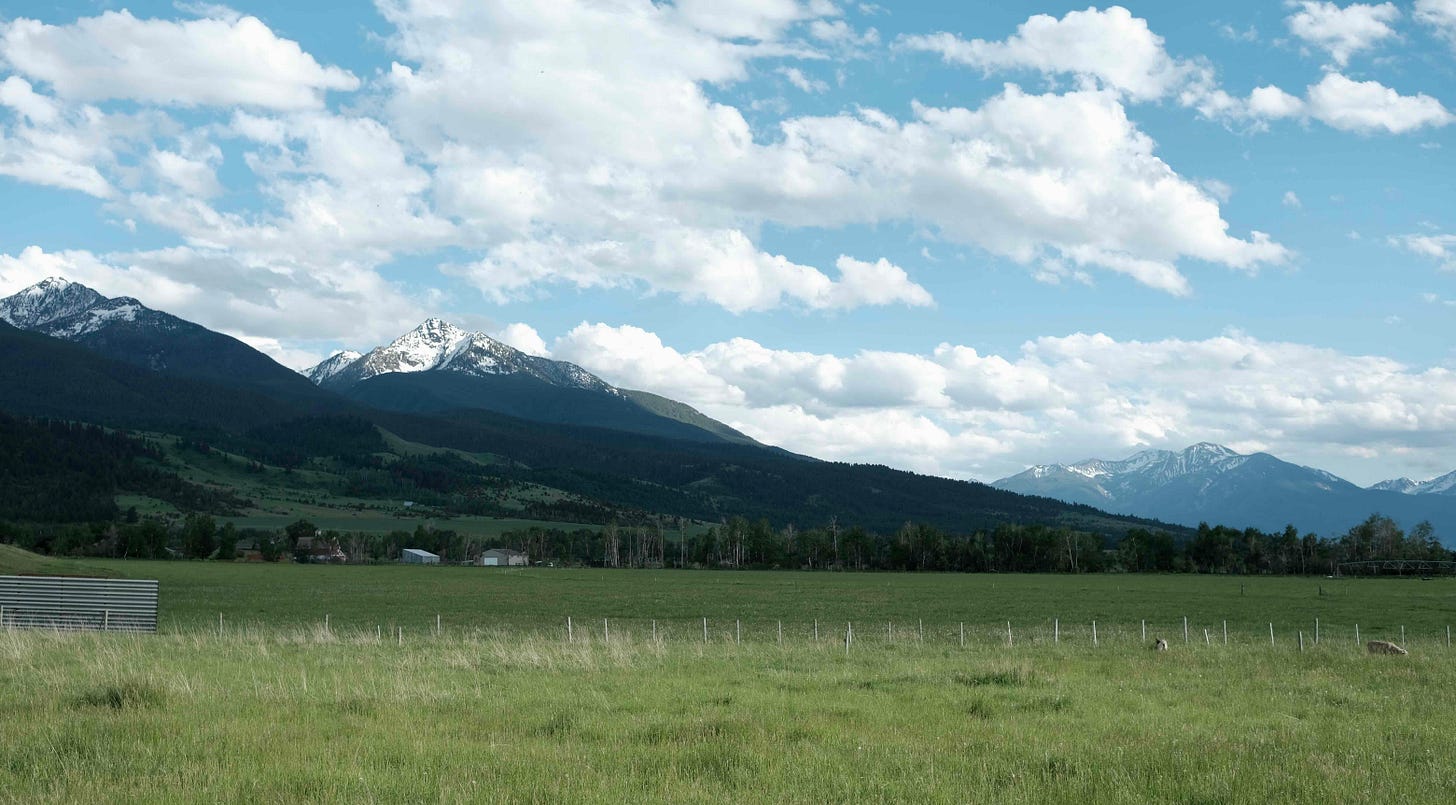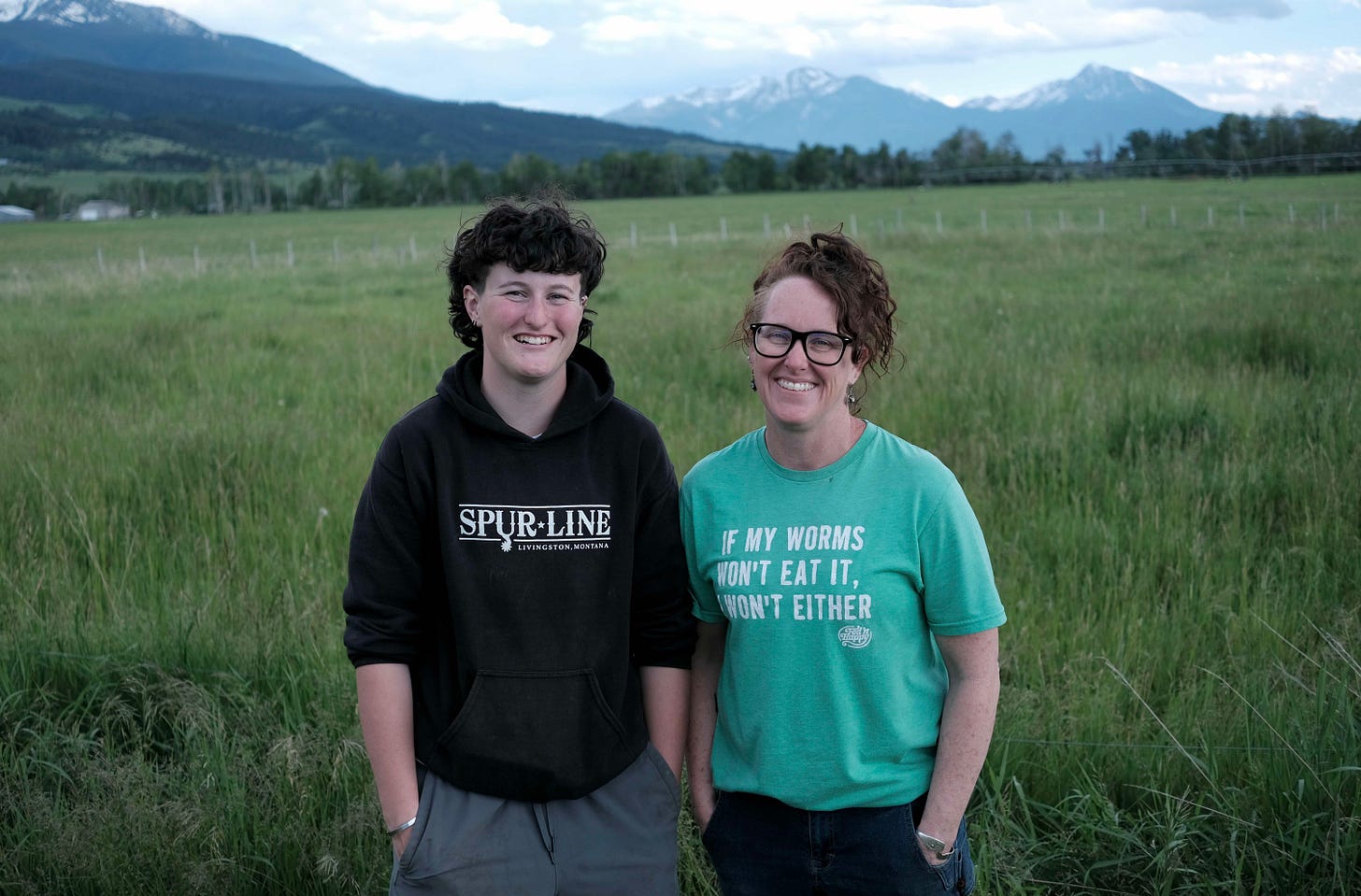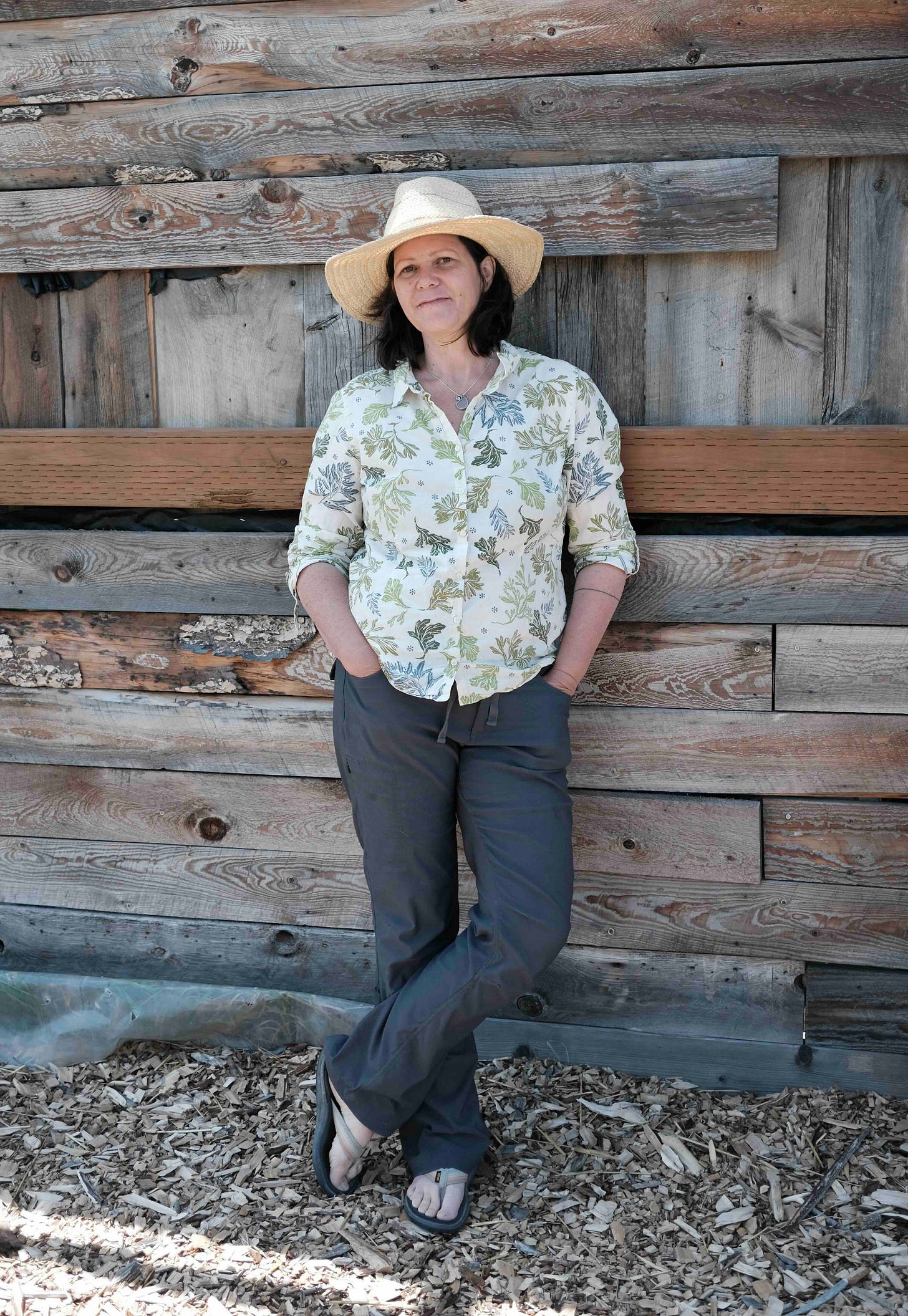In a brief step away from the seed research, I spent 5 days in Montana, visiting Nicole Masters and Meagan Lannan of Integrity Soils. Prior to departing on my Churchill Fellowship, I had just completed the Integrity Soils CREATE programme. A 36-week intensive course designed to train and empower consultants and coaches in the theory, principles and practices behind healthy agroecological systems, CREATE had been an unimaginable journey.
Going into CREATE, I was a little unsure of where I ‘fit’ in the farming world, and how I could bring together my interest in both seed and soil. Turning up to the first residential week at Althorp House back in September, imposter syndrome swiftly set in, and as the week progressed, I grappled with a whole host of emotions that I hadn’t anticipated a ‘soil course’ could bring about. Much more than a deep dive into the science behind agroecological farming, CREATE took me on a journey of discovery about myself and my perception of the world. In order to coach others, and shift paradigms, we needed to take a deep look at our own values and belief systems and ask ourselves some big questions.
One of my favourite analogies of the week was the liminal space – that tiny chink of light, the gap in the doorway, that shows you a different possibility or way of being. Once you’ve seen it, or stood in that space, there’s no unseeing it and no going back. That first week at Althorp gave me a glimpse into what could be possible, and the next 8 months were a whirlwind of learning, reflection, growth and emergence. Challenged and supported all the way but an incredible cohort of change making peers and a fantastic team of coaches, I can honestly say it is one the most impactful things I have done in my life.
So, it was with a lot of excitement that I made my way out to Montana on an epic road trip with friend and fellow CREATE student, Jen Aron of Blue Raven Farm.
Part social visit, part learning, we spent 5 days at Barney Creek Livestock with the Lannans, living the life of a ranching family and getting some first-hand experience of their incredible grass-fed beef operation.
The ranch has been in Pete’s family since 1900, and Meagan and Pete are the fourth generation to steward the land. They run a cow/calf operation over several leases that require daily to every other day moves. They are intensive intentional graziers. They look to the land first and foremost, building soil health and caring for the grass by moving the cows daily, grazing for conservation while providing their community with nutritious meat. It was a wondrous experience to see the grazing management principles we had been taught on CREATE being put into practice at the ranch, and to observe the tangible benefits these methods bring over time. In true Integrity Soils style, we nibbled on some alfalfa, checked for hollow stems (looking for Boron deficiency), and plunged our hands into the soil, scrutinising the aggregation and sniffing for that delicious earthy sweetness. I am not a stock person, but by now I had spent some time with livestock, and it was clear that these animals were thriving. The biodiversity on the wider ranch was also abundant – one of the highlights of my time there was watching a bald eagle glide down to perch on a pivot, waiting patiently for gophers to pop up from the long grass below.
Talking to Meagan and Pete about the operation, I asked them about the importance of diversity in this system.
Pete: ‘Just by the way we graze we’re trying to increase diversity. Trying to allow plants to compete in such a way. For us it’s more to do with animal health and soil health. If the cows have a lot of different things to graze then they’re healthier because they have a choice.’
Meagan: ‘Watching the diversity here has really been of my favourite parts…the spiders in the fall. When we first were doing this, of course you’d see spiders, but now they’re just going crazy, and the webs that catch the light. In September and October when you go out there in first or last light, in that little bit of dew…’
Pete: ‘it’s super disturbing how many spiders webs you walk through! Maybe that was always the case, but I never really noticed it until we started doing this. I’d never seen a dung beetle. I’m sure we had some, it’s not like we were pouring a ton of chemicals or anything like that, but I remember the first spring I was out there around midnight and just saw them. The amount of diversity we have in what you don’t really think about (is incredible). In grass species, in forbs, in bugs. We’ve got a lot of cools bugs, and I love watching what they do.’
One of the most powerful things about these farming practices seems to be the abundance of life that occurs.
Meagan: ‘And all that is just getting stronger and stronger. My other favourite part is about resiliency, when I do tours and people think they know what we’re doing but then we go out there and get down and dirty so to speak, and they’re excited! And I think that also has to do with know who your farmer is, know who your rancher is, ask these sorts of questions, go on a tour, learn a lot. Because it’s your food. To me that’s also a really big part of what we do.
Pete: ‘And bringing that back to diversity, we have people who are very conventional farmers who come here, and people on the opposite far end of the spectrum, people who want to do everything and be Joel Salatin and do some really cool stuff, and then everything in between. And we have the ability to influence or at least educate all these people from all parts of the spectrum. That’s super cool.’
The Lannans are clear advocates for this method of ranching, it’s a whole systems approach with community at its heart. And it’s a family affair. As well as running the business, Meagan and Pete are also raising the fifth generation with a passion for regenerative agriculture. Their kids, Maloi and Liam, are heavily involved in the day to day running of the ranch. Maloi runs her own sheep herd and grazes her own lease. Under the name of Red Clover Lambs, she rotationally grazes a small flock of sheep with the help of Australian kelpie Chuck. Maloi is an incredible grazier, growing up on the ranch and helping out with daily tasks has clearly given her a deep connection to the animals and understanding of the land. She has a whole breadth of experience already, and it was amazing to listen and learn from her during our time at Barney Creek.
During the trip to Montana, as well as spending time with the Lannans and an epic visit to Yellowstone Park, we also spent a day helping Nicole out at her property nearby.
Nicole Masters has been a huge influence of my journey into soil health. I first read For the Love of Soil in 2021 and haven’t looked back. She opened my eyes to a soil first approach to regenerating landscapes: her years of experience coaching farmers through transition providing profound insight into how we can revitalise farming systems in these challenging times. I really value Nicole’s inclusive approach to sharing her knowledge, and the opportunity to learn from and with her throughout CREATE is one I am so grateful for. So, whilst installing some irrigation for her recently planted windbreak and weeding the veggie patch, I took the opportunity to grill Nicole a little deeper on some other topics close to my heart. Nicole and I have chatted a fair amount about seed in the past, so it felt like the perfect time to expand on this conversation. Top of the list: diversity, and the role it plays in building seed and food sovereignty.
‘I think that everything needs to be seen through the lens of how do we build more resilience, and we do that through diversity. That’s my concern with some plant breeding, it’s like, oh, we have discovered a super duper ultra producer, and it only performs well with high Nitrogen and Phosphorous (fertlisers). But we’re now seeing, with the warming climate, more and more stress on N and P at heat, and you don’t have plants that are adapted to deal with nutrient uptake when they’re stressed (due to breeding methods). I think that diversity is important not only within species but also within traits in plants: building in redundancy, and thinking about redundancy with plant species and breeding is really incredible.’
Redundancy is a term that had come up during CREATE, and I asked Nicole for some clarification in this context. ‘ Redundancy means you have genes or aspects of the plant that you might not think are very important - that are redundant as such - until you get a certain condition. It might be resistance against a blight or rust, but you don’t have that blight or rust, or it might be extreme weather events - ‘We haven’t had a flood here since 1852 so why do I need a plant that has that gene?’, and then you have that massive flood, and plants still thrive. Our modern farming systems and breeding systems have bred out redundancy, we need to be thinking more in redundancy because we don’t know what tomorrow looks like.’
This rings true. From what I have learnt from plant breeders and seed growers on my travels so far, building in redundancy is essential for building in resilience. Keeping the genome, and epigenome, as broad as possible so we have something to work with and crops can adapt.
This redundancy could also include the ability to form relationships with a diversity of life in the soil. An area of research that I’m particularly interested in is the seed microbiome, and the impact of growing and saving seed in healthy microbially abundant soils like those found in truly regenerative systems. I have been following the work of Dr James White and his team at Rutgers university for a while, their exciting research into the Rhizophagy cycle - the process of plants consuming microbes to obtain nutrition - and the transfer of these endophytes generationally through seed, is something I see as fundamental in guiding our organic plant breeding and seed saving practices in the future, and it was great to hear Nicoles thoughts:
‘I think that the more that we learn about microbial interaction and actually how much plant diversity is feeding different types of microbes, how much the plants are communicating with each other and sharing microbiology, then you realise how much of that is actually contributing to potentially that epigenome, to resilience, to endophytes (actually exchanging microbiology), and then potentially all that having that impact on food quality and resilience. I actually think that diversity is the key to all of this.’
I loved this conversation. Weaving together the soil and seed narrative seems so intuitive to me. It feels logical to ensure plants are set up to thrive not only in terms farming practice, but also in the knowledge they carry with them. How can we expect plants to thrive when we isolate them from their ancestral wisdom and relationships with other living communities in the soil? Something to ponder, and a topic I hope to explore further as I continue my journey around the Pacific Northwest.








